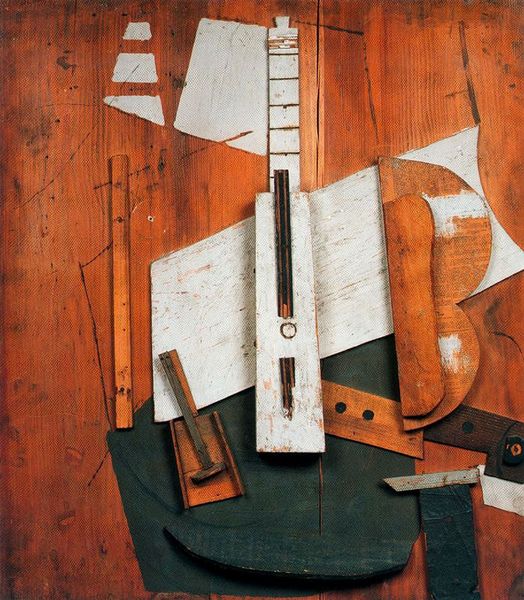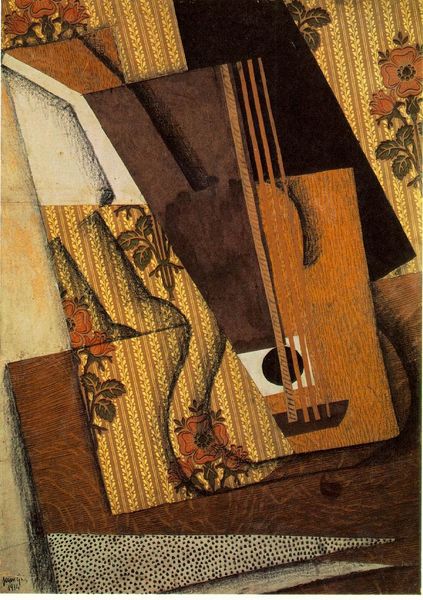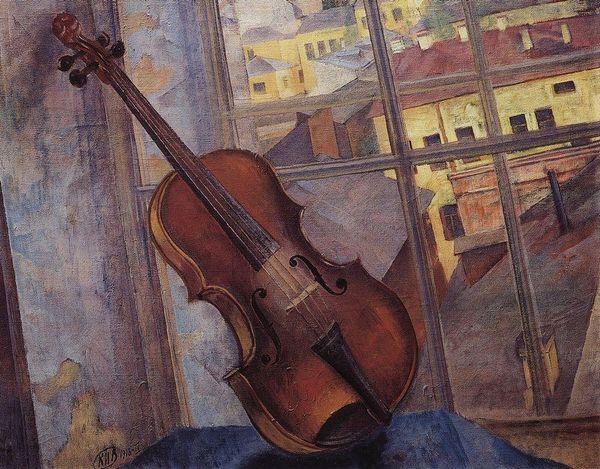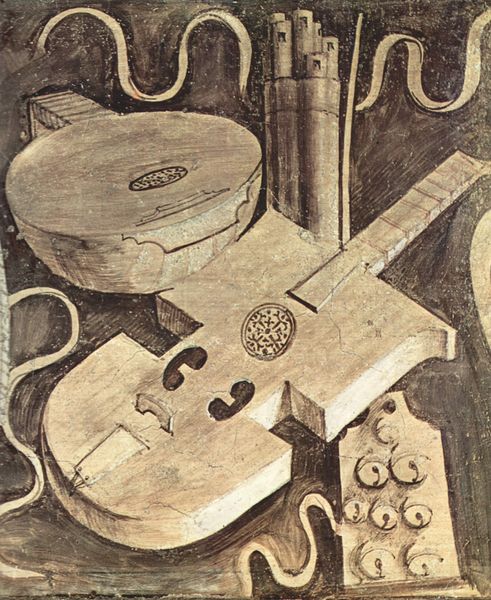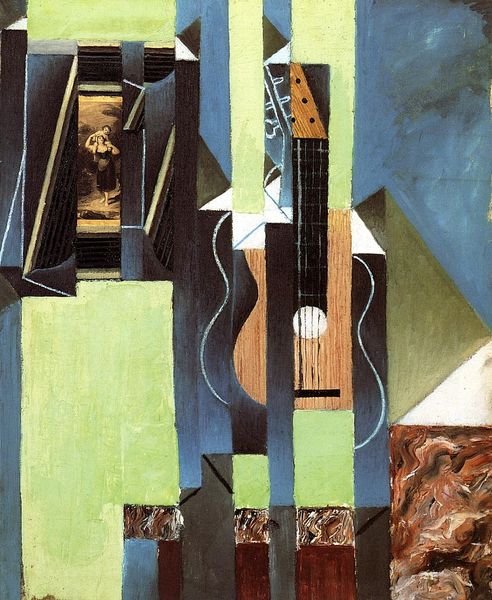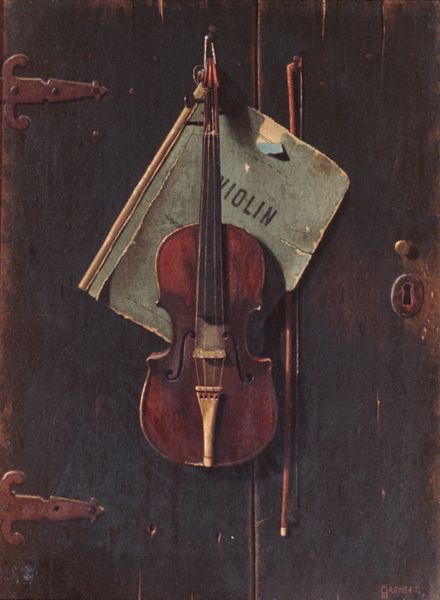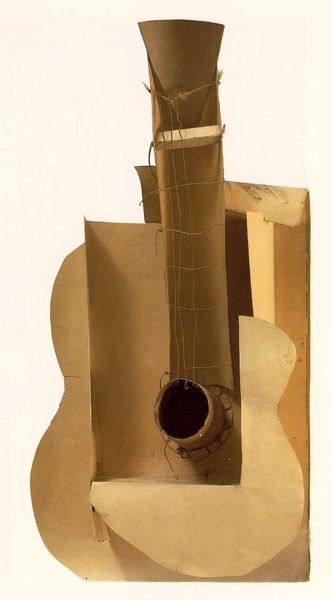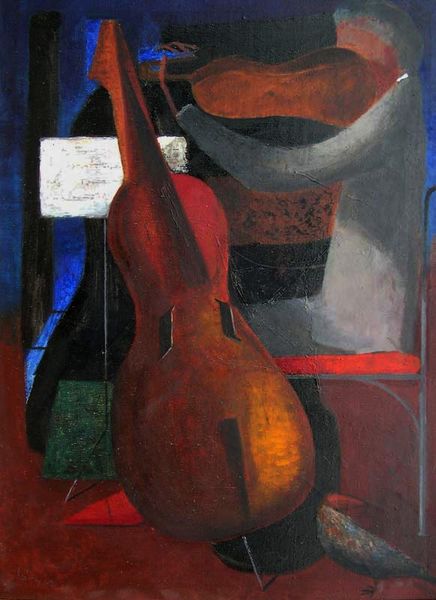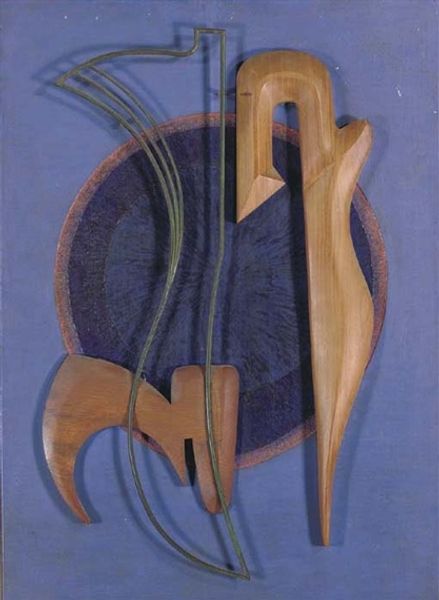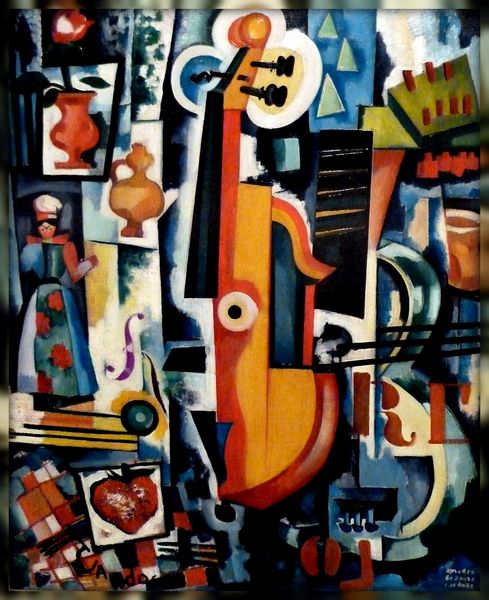
mixed-media, oil-paint
#
cubism
#
mixed-media
#
abstract painting
#
oil-paint
#
oil painting
#
abstraction
#
mixed media
Copyright: Public domain US
Curator: Looking at Pablo Picasso's "Guitar (I love Eva)" from 1912, it's remarkable how he uses mixed media, including oil paint, to deconstruct and then reconstruct the essence of a guitar. Editor: It certainly captures a sense of fragmentation. The muted palette and sharp angles create a very analytical, almost cold atmosphere despite the overt declaration of love in the title. Curator: Indeed, and notice how Picasso doesn't shy away from exposing the underlying structure. We can see where different planes intersect and how the application of paint varies, building texture. The inclusion of mixed media extends the investigation beyond simply depicting the guitar, engaging in the possibilities of making, building, and redefining our understanding of objects and space. Editor: It's fascinating to consider this in the context of his personal life too. 'Eva' was Marcel Humbert, his lover at the time. Is this fracturing and reassembling a visual representation of the complex emotional landscape of their relationship? A kind of Cubist love letter that attempts to explore love's multifaceted, sometimes discordant nature? The overt declaration of affection juxtaposed with the angular and somewhat harsh representation of the instrument. Curator: That is very perceptive. Consider also how music and guitars were entering popular culture and mass production in the early 20th century. Picasso elevates everyday experience through artistic processes, reinterpreting how ordinary objects are understood by moving between the language of ‘high art’ painting and popular entertainments. Editor: Right, he elevates it, but he also dissects it. Perhaps this reflects broader societal changes too – a breakdown of traditional forms, the emergence of new industries, and the questioning of established power structures all filtered through his intimate experience of love. Curator: Precisely! The tension between mass production, artistic skill, private emotions, and public performance is really central. The layers here highlight a critical relationship between subject and material exploration. Editor: Absolutely, a radical expression for a revolutionary period. I keep coming back to that feeling of disharmony. It reminds us love isn’t just sentimentality; it's intellectual, challenging, even a bit brutal at times. Curator: The construction offers space to understand the changing contexts of production in an exciting era, the birth of popular culture. Editor: Agreed; seeing beyond the surface helps us connect to the heart of the moment Picasso was portraying.
Comments
No comments
Be the first to comment and join the conversation on the ultimate creative platform.
